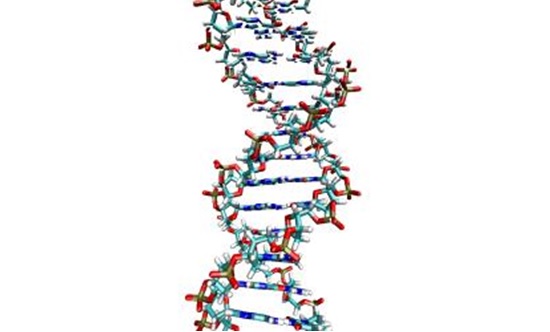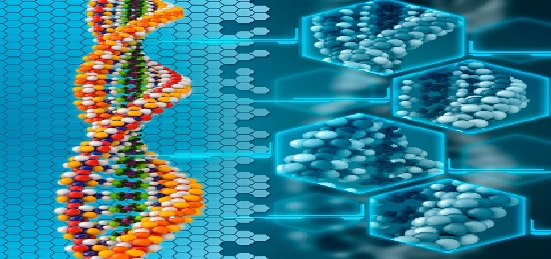The Technology of Genomics
An organism's complete set of DNA is called its genome. Virtually every single cell in the body contains a [1] complete copy of the approximately 3 billion DNA base pairs, or letters, that make up the human figure 1 shown below genome.

Figure 1: Genomics
With its four-letter language, DNA contains the information needed to build the entire human body. A gene traditionally refers to the unit of DNA that carries the instructions for making a specific protein or set of proteins. Each of the estimated 20,000 to 25,000 genes in the human genome codes for an average of three proteins.
Located on 23 pairs of chromosomes packed into the nucleus of a human cell, genes direct the production of proteins with the assistance of enzymes and messenger molecules. Specifically, an enzyme copies the information in a gene's DNA into a molecule called messenger ribonucleic acid (mRNA). The mRNA travels out of the nucleus and into the cell's cytoplasm, where the mRNA is read by a tiny molecular machine called a ribosome, and the information is used to link together small molecules called amino acids in the right order to form a specific protein.
In medicine, next-generation genomic technology can collect increased amounts of genomic data. When this data is combined with informatics, it enables the integration of all this [2] information. Doing so better enables researchers to understand drug response and disease based on genetics and also helps in the efforts to achieve personalized medicine.
Mapping a human genome is time-consuming and produces a terabyte (TB) of unorganized data. As technology advances and that data becomes easier to store and comprehend, more healthcare providers will use it to diagnose and treat patients and create clinical decision support.
The term genomics was first used by Thomas Roderick in 1986. It refers to the study of structure [3] and function of entire genome of a living organism. Genome refers to the basic set of chromosomes. In a genome, each type of chromosome is represented only once. Now genomics is being developed as a sub discipline of genetics which is devoted to the mapping, sequencing and functional analysis of genomes.
References:
- https://www.genomicseducation.hee.nhs.uk/education/core-concepts/what-is-genomics/
- https://searchhealthit.techtarget.com/definition/genomics
- https://www.biologydiscussion.com/genomics/genomics-meaning-types-and-classification-genetics/38127
Cite this article:
Nandhinidwaraka. S (2021) The Technology of Genomics, AnaTechmaz, pp 1





